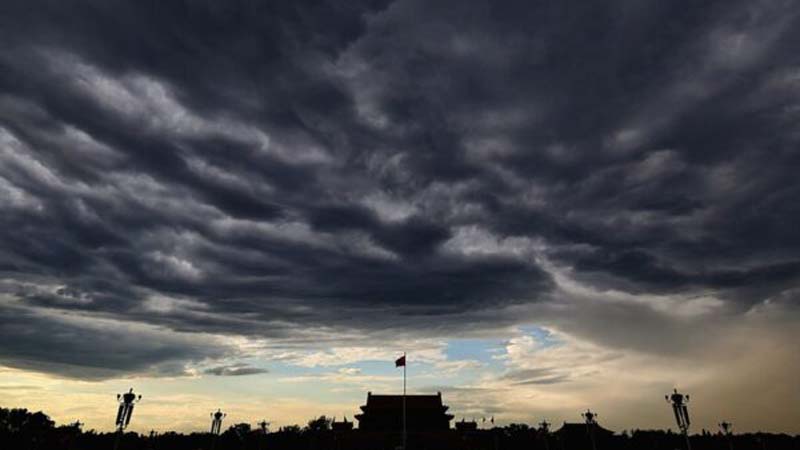Reporter : Li Ming / Editor: Xiaohui / https://www.ntdtv.com/gb/2021/01/15/a103032395.html / Translation, editing : Gan Yung Chyan, KUCINTA SETIA
Image : On 12 January 2021, residents of Shijiazhuang, Hebei Province, China, are being tested for SARS-CoV-2 (Chinese Communist Party virus / CCP virus, covi, novel coronavirus) as part of a large-scale local testing program. (STR/AFP via Getty Images)Recently, a new wave of covid epidemic has broken out in mainland China, and large-scale nucleic acid tests have been carried out in many areas. Shijiazhuang, Hebei, the hardest hit area, has been carried out. Two rounds of full inspection. However, some mainland Chinese media reported that, after verification, it was found that 34% of the confirmed cases in Shijiazhuang in recent days were "yin to yang" after testing.
Since the announcement of the trajectory of confirmed covid cases in Hebei, the public has discovered a special phenomenon: some confirmed cases have been negative after multiple nucleic acid tests, and then tested positive in subsequent tests, the so-called "yin to yang" phenomenon .
According to a Chinese media "Xiaoxiang Morning Post" report on 14 January reporters from this media reported the outbreak in Shijiazhuang on 13 January at the Hebei Health Commission. It was found that from the 5th to the 13th of this month, the city released a total of 369 confirmed trajectory notifications. Among them, the information released from 5 to 7 January stated that no cases of "yin to yang" were found. However on the 8th, according to the information released on the 13 January, there were 126 cases of "yin-to-yang" cases, accounting for about 34% of all confirmed diagnoses.
In other words, in the past week, the "yin to yang" cases accounted for more than 30% of the confirmed cases in Shijiazhuang.
The report mentioned a typical case: a 66-year-old patient received five nucleic acid tests on 3, 5, 7, 8 and 9 January, and the results were all negative; The person is a close contact of other confirmed cases, so he was transferred to an officially designated quarantine point for medical observation on 10 January but the nucleic acid test was positive on the day he arrived at the quarantine point. The patient was sent to the Jianhua District of Shijiazhuang People's Hospital on 11 January and was formally diagnosed as a confirmed covid case by the hospital on 12 January.
For more than 30% of the infected people, there is the phenomenon of "yin to yang" after multiple tests. Chinese netizens have questioned: Is the current nucleic acid detection technology reliable? Can such test results be believed?
In fact, as early as the first round of the outbreak in mainland China from the end of 2019 to the beginning of 2020, medical experts discovered that the accuracy rate of nucleic acid testing at that time was only 30%-50%. They called this phenomenon "false negatives".
In early February 2020, Wang Chen, Dean of the Chinese Academy of Medical Sciences, talked about this phenomenon in an interview with Chinese media. He admitted, “For patients with this disease, (using nucleic acid testing) is only 30%-50%. The positive rate. There are still many false negatives through throat swabs. Nucleic acid was not found, but it is in fact."
At that time, the Chinese media reported that the kit used to detect covid was approved through the official emergency approval procedure and was not strictly tested before being marketed. Therefore, the quality was uneven, which led to the real-time fluorescent RT-PCR identification method used in nucleic acid detection "There are loopholes." In addition, Chinese media quoted industry sources as saying that there are multiple links in the process of virus sampling and detection by medical staff, and there may be problems in each link, resulting in low detection accuracy.



No comments:
Post a Comment